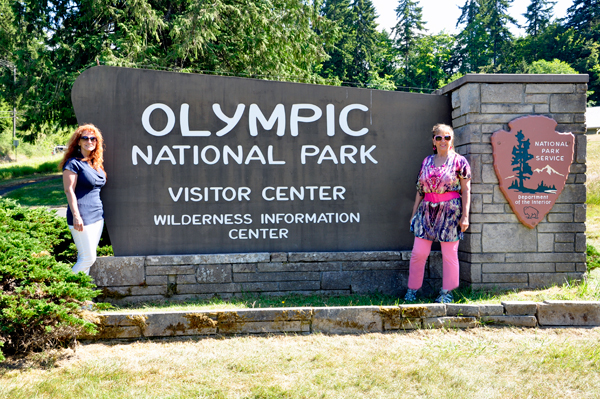
|
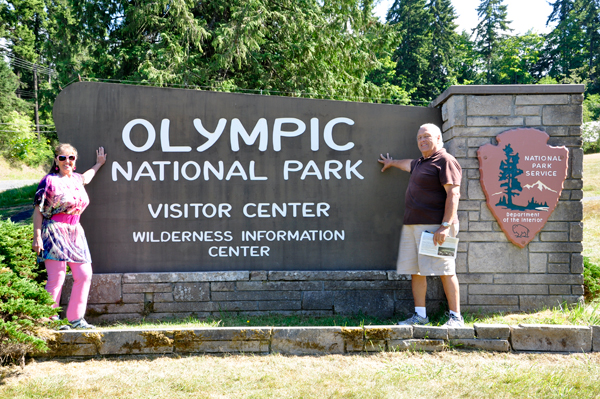
|
 Olympic National Park is a United States National Park located in the state of Washington, in the Olympic Peninsula. The park has four basic regions: the Pacific coastline, alpine areas, the west side temperate rainforest and the forests of the drier east side. Olympic National Park is a United States National Park located in the state of Washington, in the Olympic Peninsula. The park has four basic regions: the Pacific coastline, alpine areas, the west side temperate rainforest and the forests of the drier east side.
U.S. President Theodore Roosevelt originally created Mount Olympus National Monument on 2 March 1909. It was designated a national park by President Franklin Roosevelt on June 29, 1938. In 1976, Olympic National Park became an International Biosphere Reserve, and in 1981 it was designated a World Heritage Site. In 1988, Congress designated 95 percent of the park as the Olympic Wilderness. |
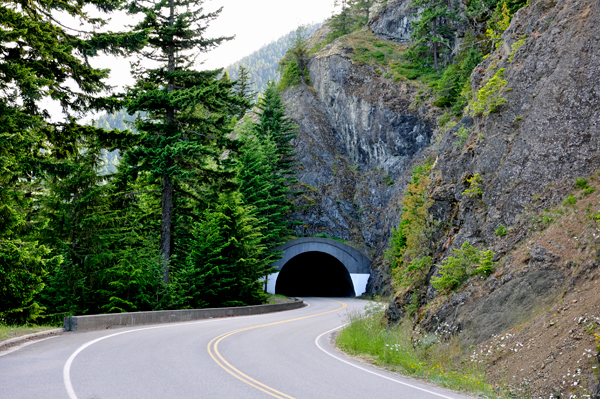
|
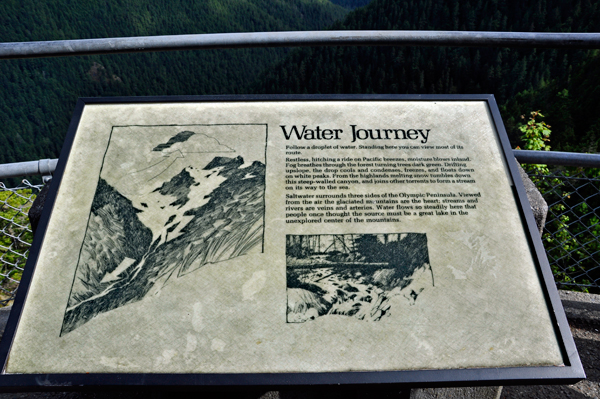
|
Although bigger photos of
signs like the one below may take a bit of extra time to load onto your
monitor screen, Karen Duquette feels that it is important to be able
to read the signs and appreciate the beautiful scenery and its formation. |
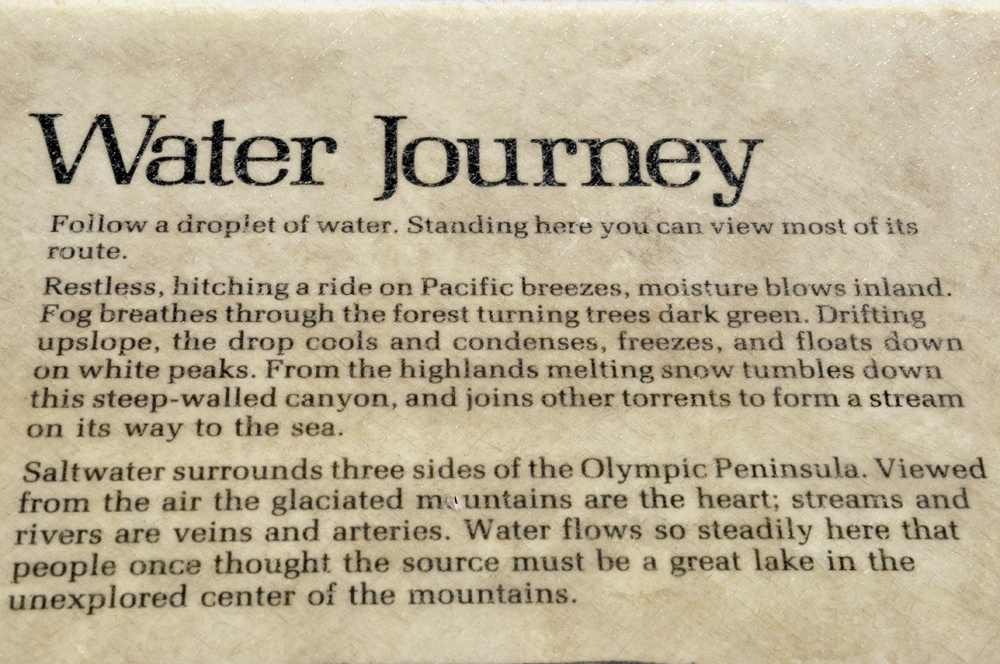
|
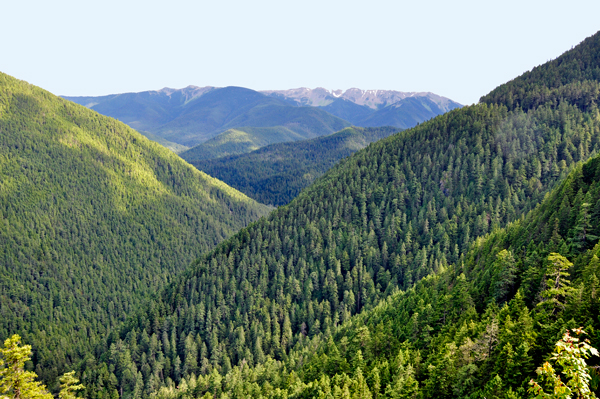
|
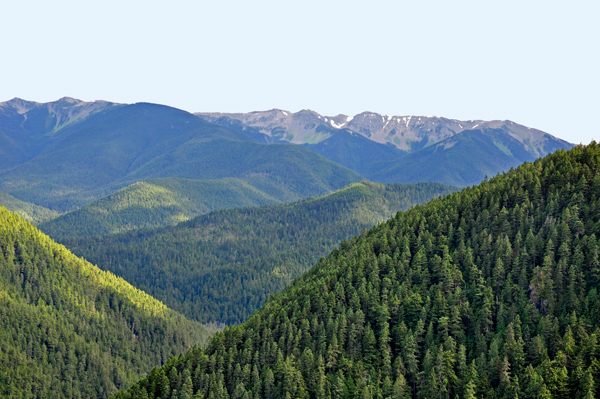
|

|
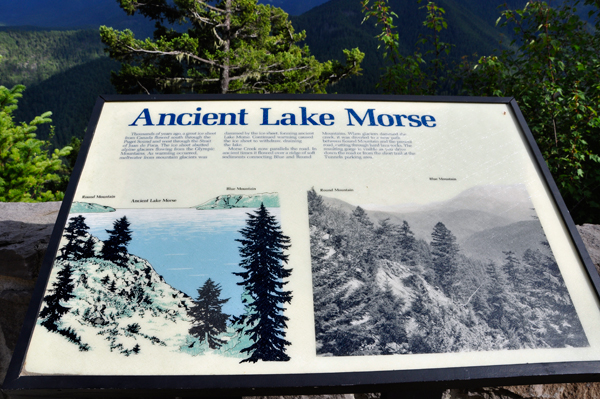
|
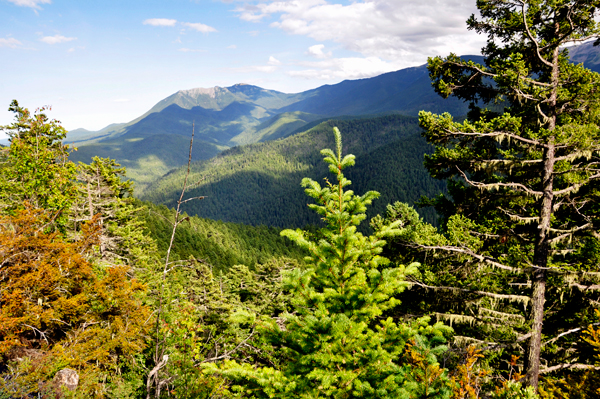 |
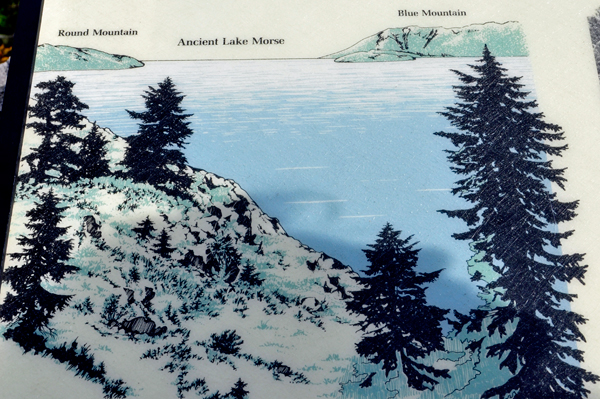
|
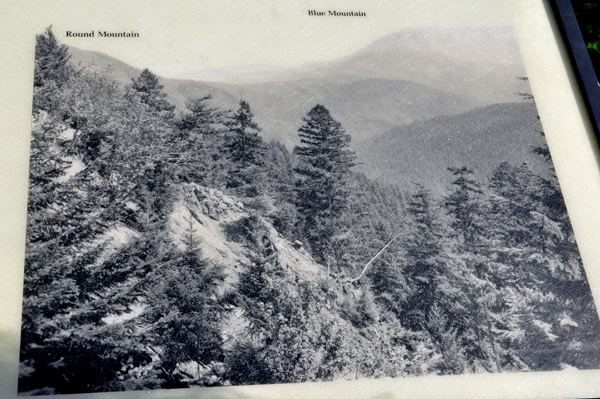
|
Below: Hurricane Ridge was the area where
most of the visitors were located, and the scenery in this area was
amazing. Plus there were lots of deer. Trails offer spectacular views
of the high country and the Olympic Mountains. |

|
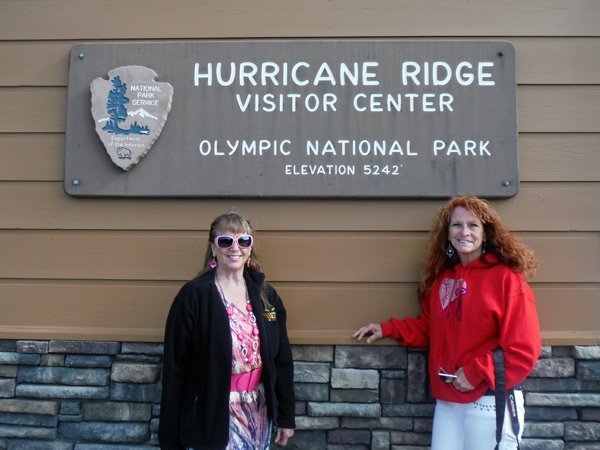 |
 |
Below: Deer were everywhere In Olympic
National Park. |
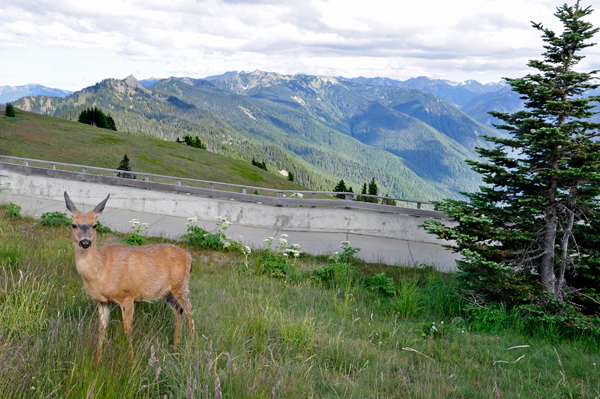
|
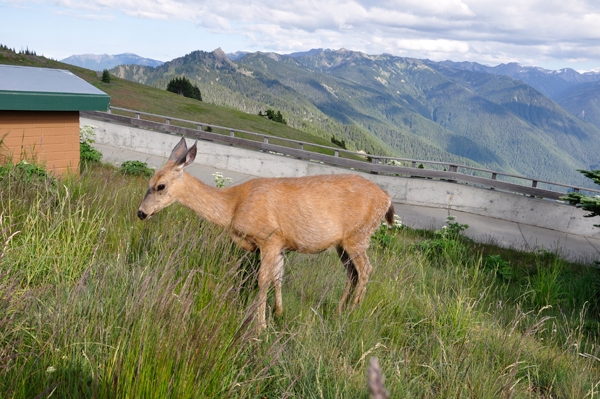
|
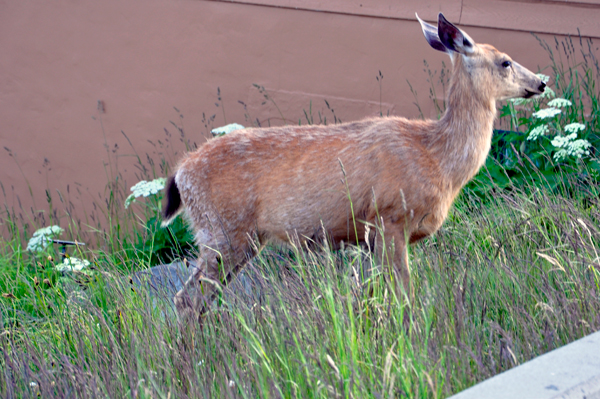
|
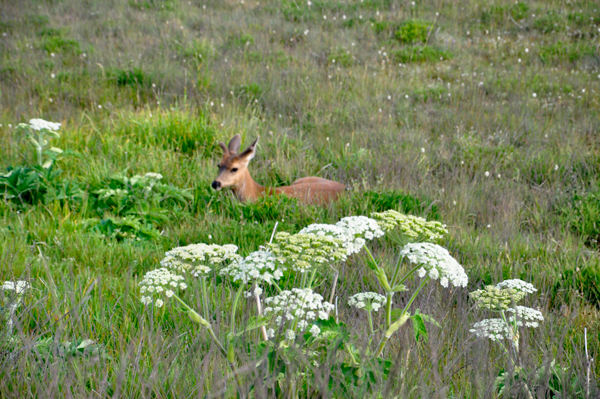
|
 A world of landscapes unfold here; U-shaped valleys and brilliantly colored wildflowers blanket subalpine meadows. Geologists still debate the origins of the Olympics. Some 50 million years ago, lava gushed from underwater tips in the edge of the continent, hardening into miles thick layers of basalt. Later an immerse submerged delta of sandstone and shale formed farther out in the ocean. These layered rocks slowly rode back to the continent and jammed beneath the basalt, forcing the Olympics to rise from the sea 10 to 20 million years ago. Ice-age glaciers helped carve the Strait of Juan de Fuca and Pugent Sound, separating the Olympics from nearby lands. Hence the rugged Olympic Mountains - a gift from the sea. A world of landscapes unfold here; U-shaped valleys and brilliantly colored wildflowers blanket subalpine meadows. Geologists still debate the origins of the Olympics. Some 50 million years ago, lava gushed from underwater tips in the edge of the continent, hardening into miles thick layers of basalt. Later an immerse submerged delta of sandstone and shale formed farther out in the ocean. These layered rocks slowly rode back to the continent and jammed beneath the basalt, forcing the Olympics to rise from the sea 10 to 20 million years ago. Ice-age glaciers helped carve the Strait of Juan de Fuca and Pugent Sound, separating the Olympics from nearby lands. Hence the rugged Olympic Mountains - a gift from the sea.
|
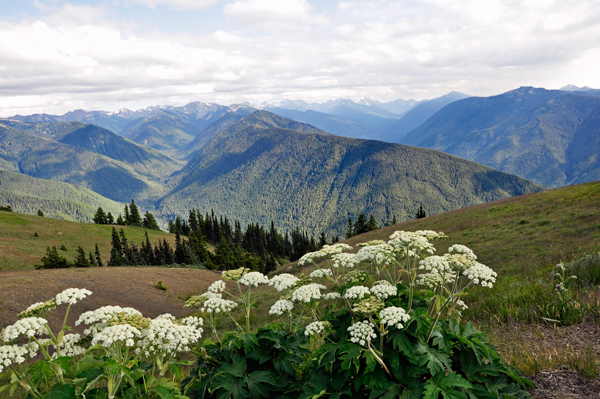
|
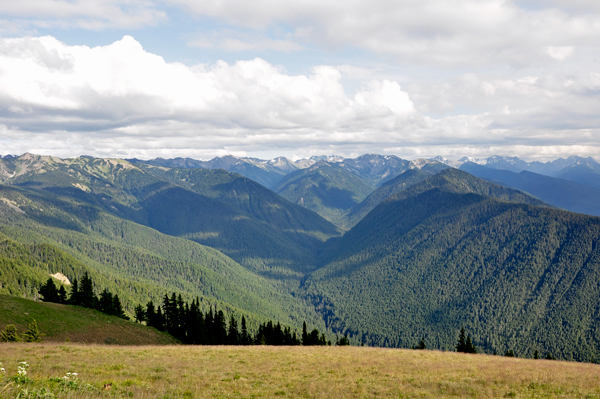
|
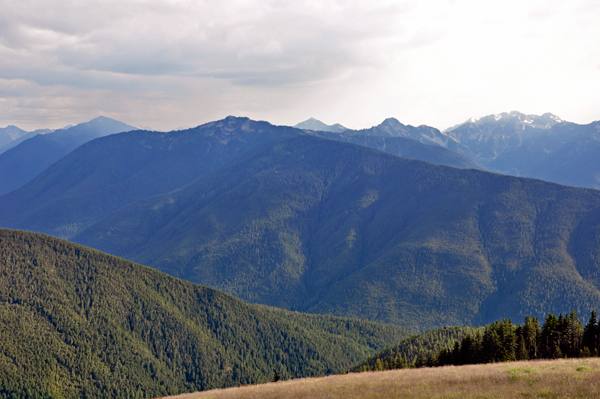
|
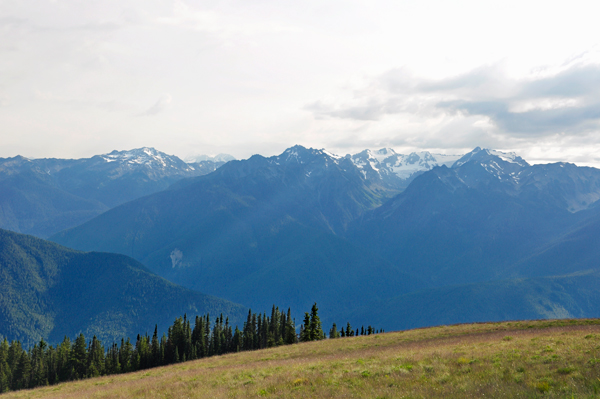
|
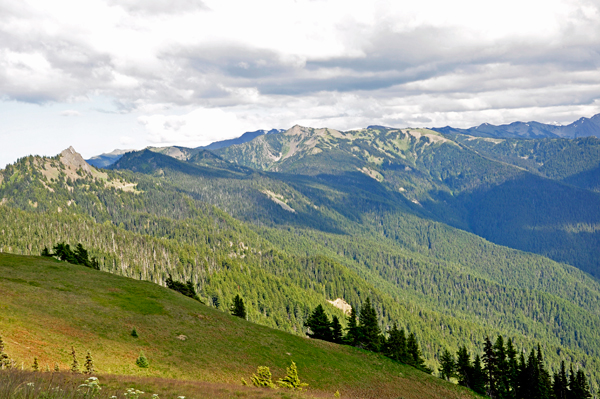
|
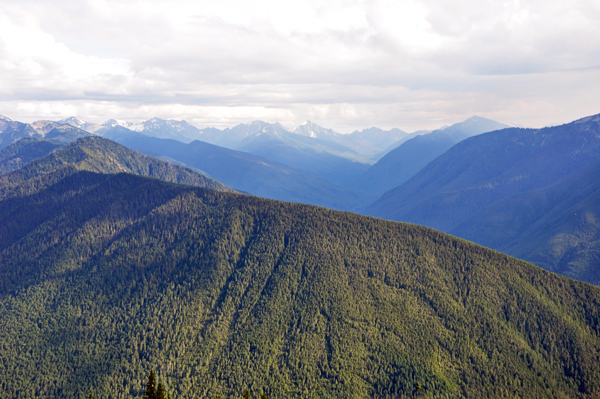
|
 After
reading the sign shown below, Lee Duquette just had to smell the flower.
A male passering by said to him, "If you want to smell dirty
socks, you can smell mine." After
reading the sign shown below, Lee Duquette just had to smell the flower.
A male passering by said to him, "If you want to smell dirty
socks, you can smell mine."
|
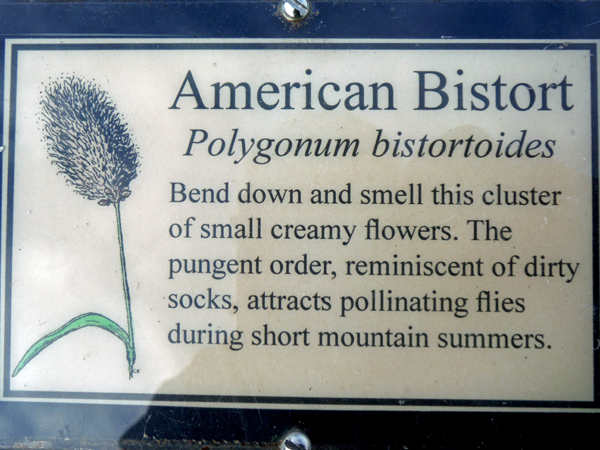
|
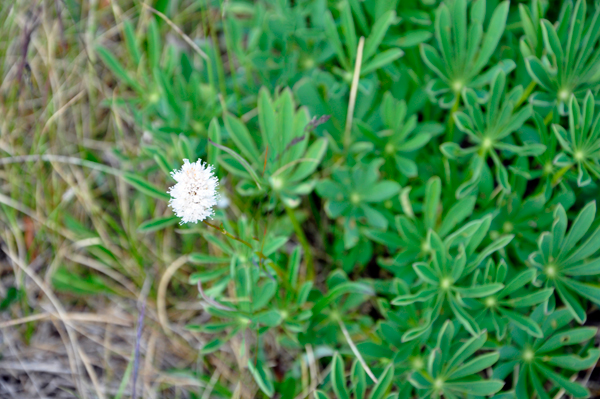
|
Below: Lee Duquette smelling the "dirty
sock" flower. |
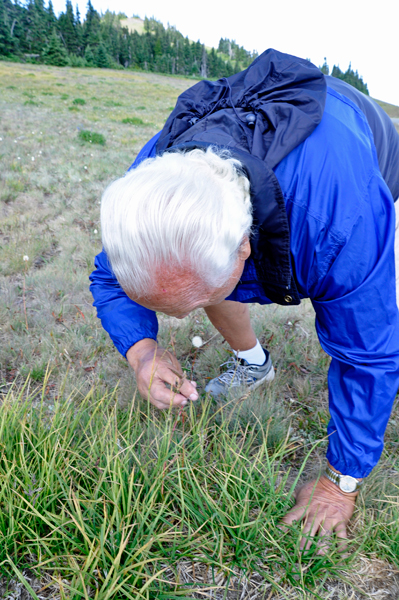
|
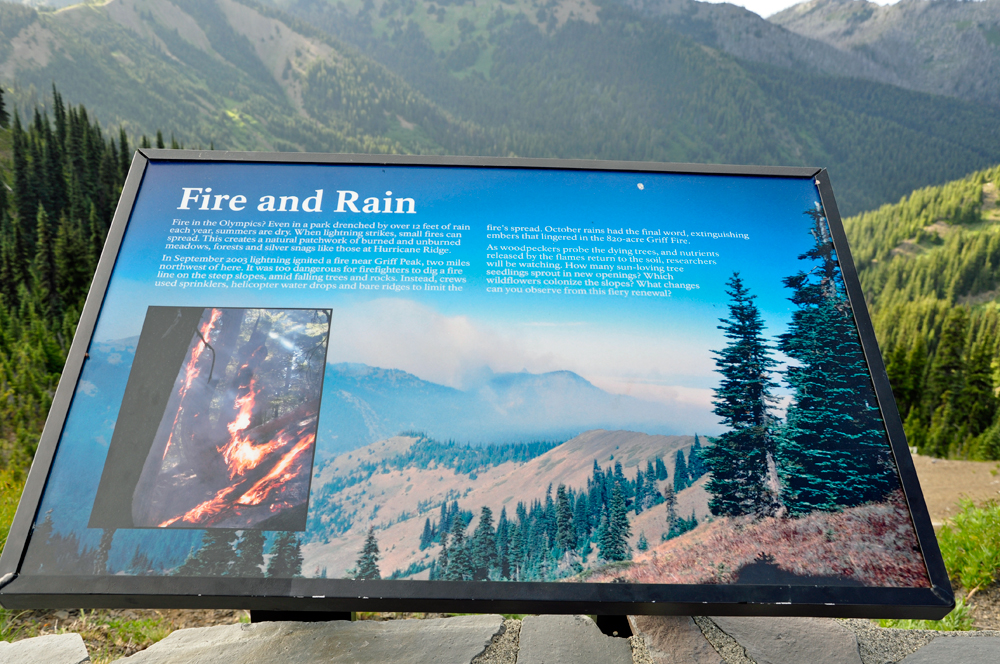
|
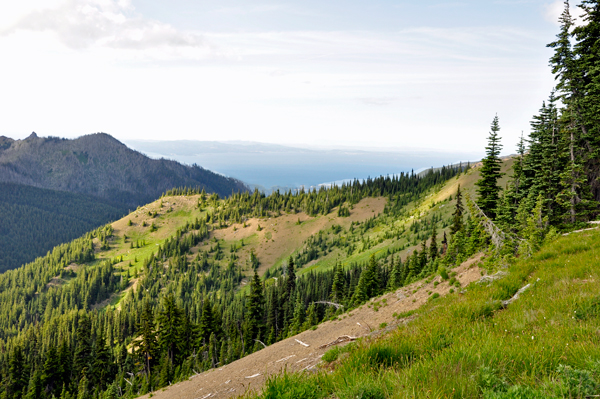
|
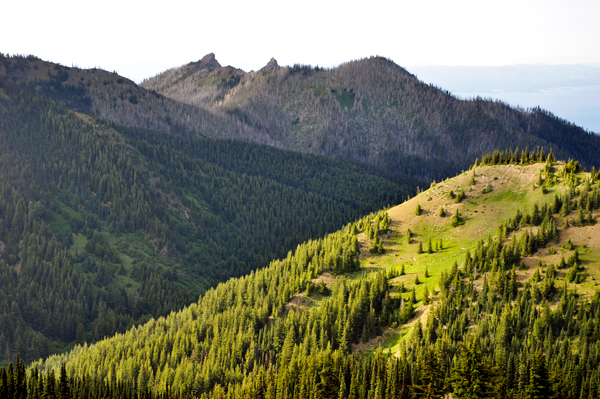
|
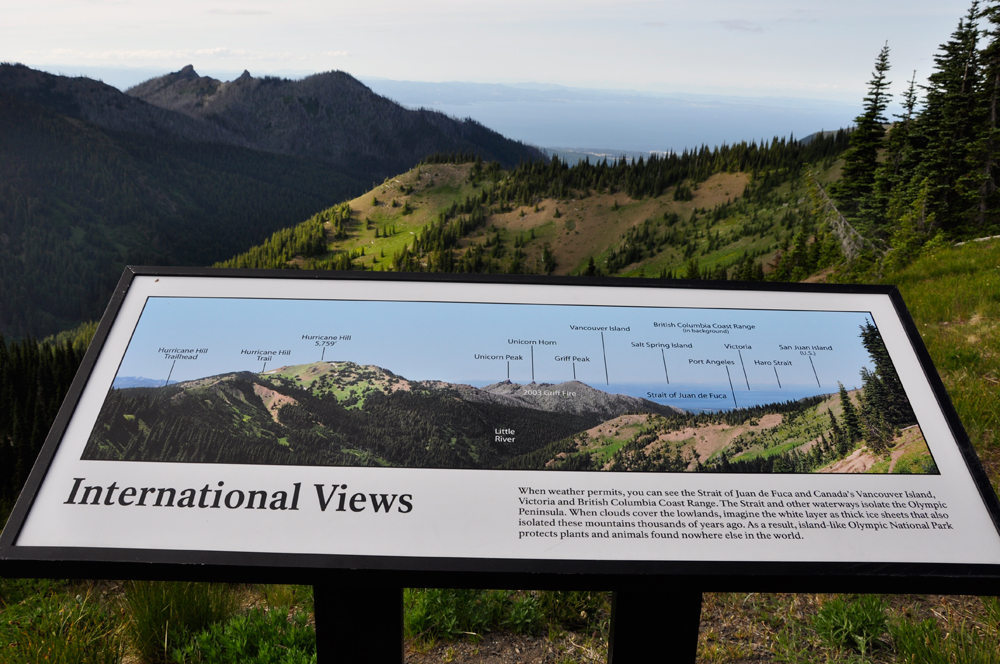
|
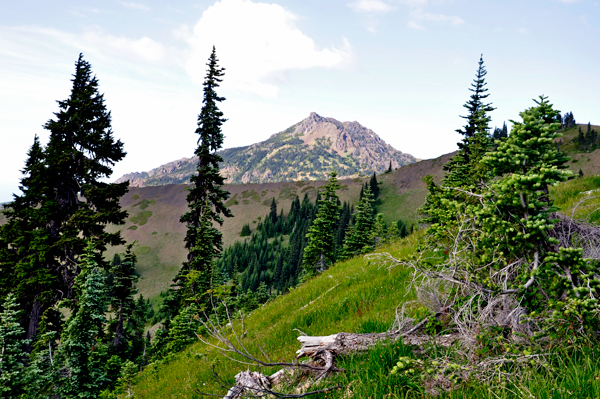
|
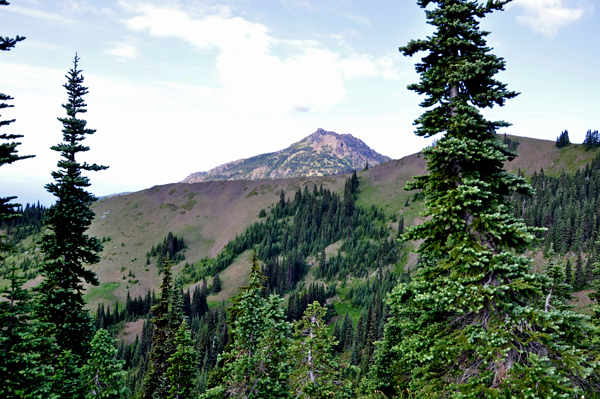
|
Below: Karen Duquette always likes it when flowers have signs near them. Not too many of the flowers here had signs, but here are a few of them. |
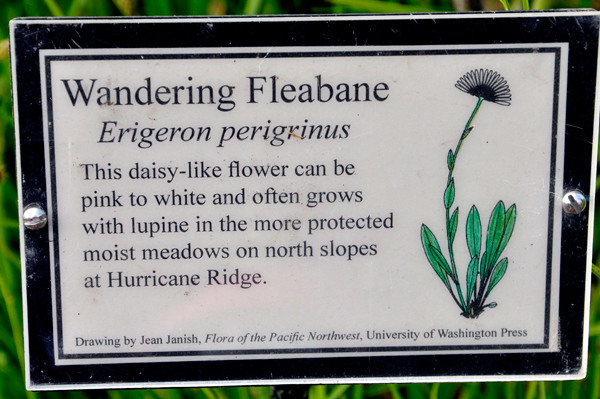
|
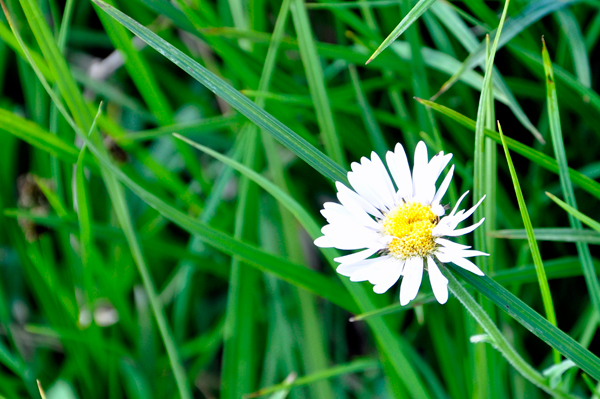
|
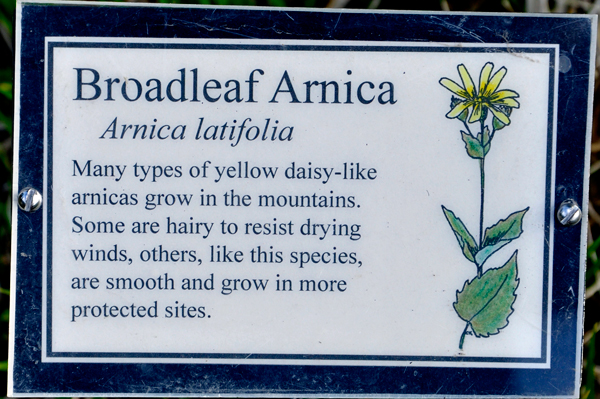
|
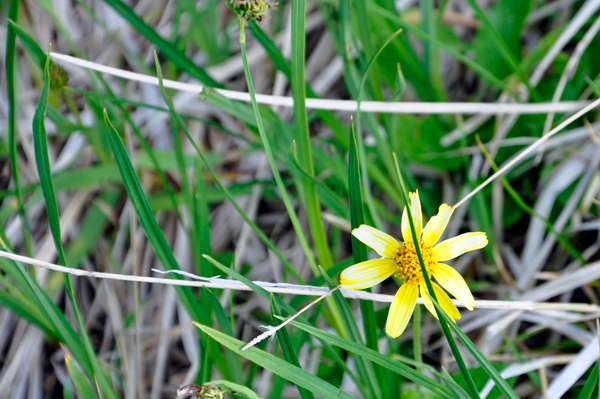
|
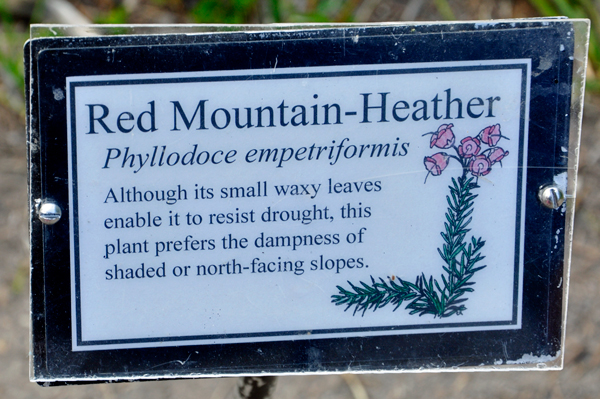 |
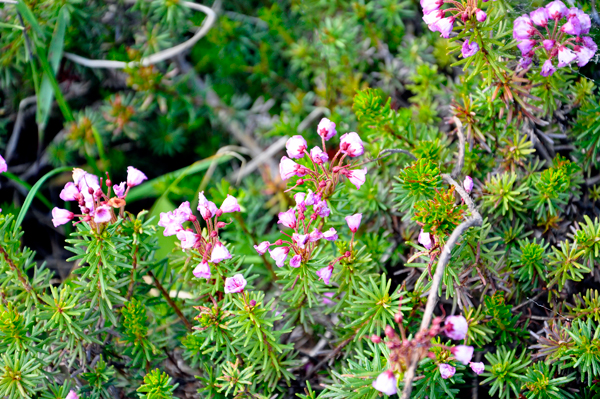 |
Below: Walking the trails, the two RV Gypsies
saw a deer and they just stood still and took a few photos. They never
walk closer to them. Karen Duquette told some children to stop running
towards the deer. Their parents said nothing. (Really ??) So
the deer went on about its business. |
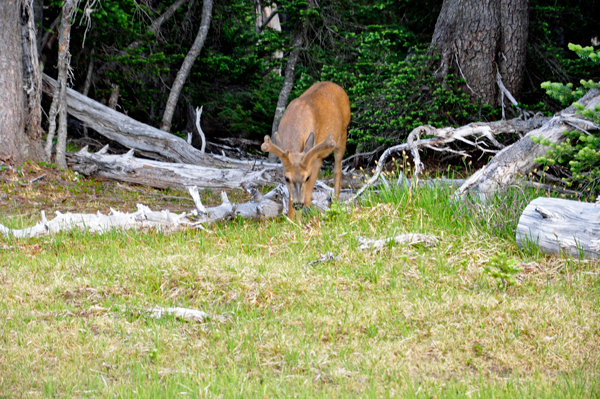
|
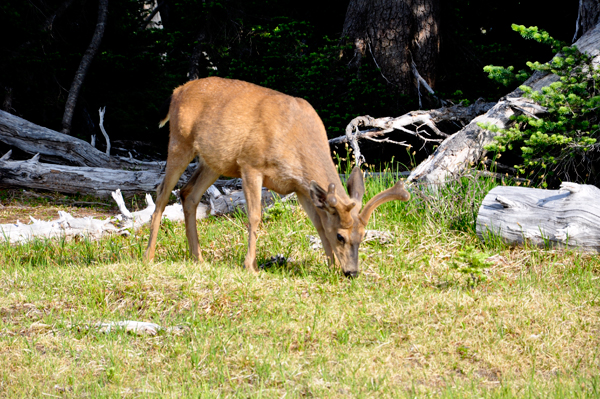
|
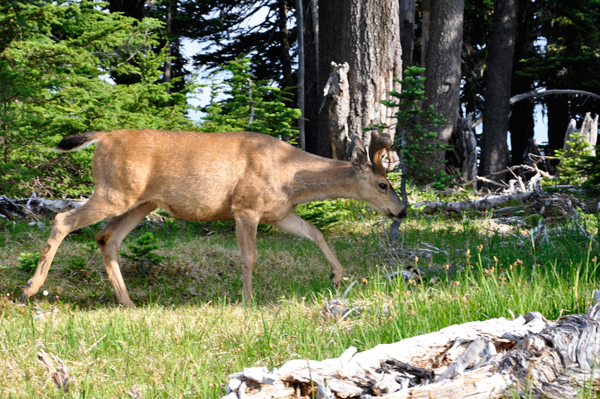
|
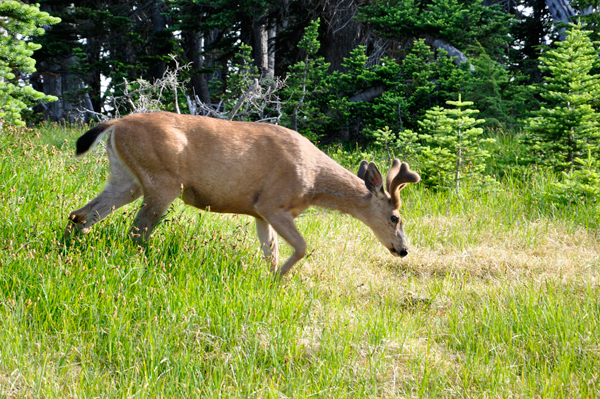
|
Below: More beautiful unspoiled scenery plus the Olympic Ski Patrol building. |
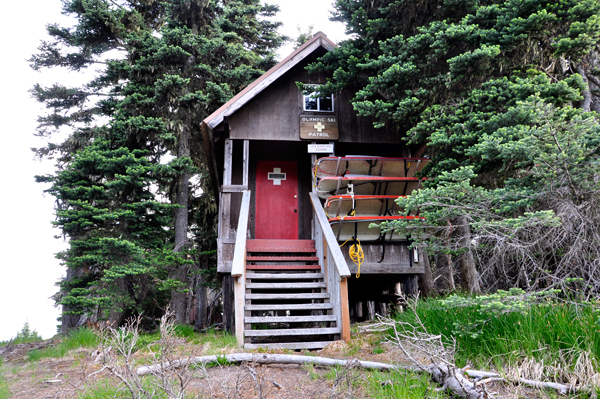
|
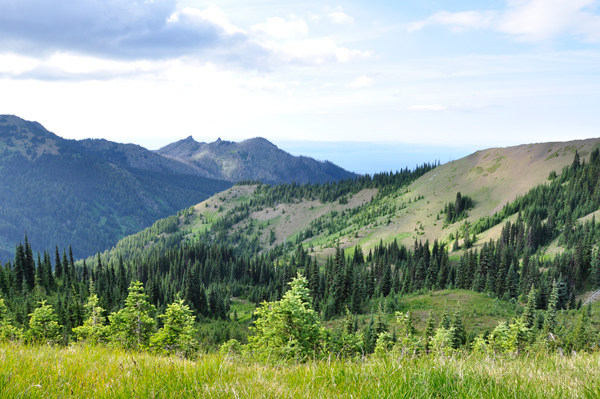
|
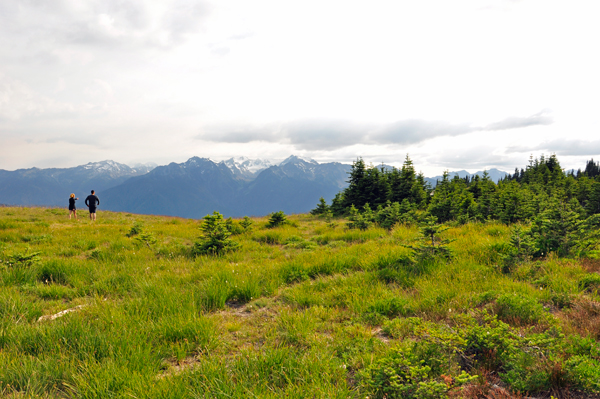
|
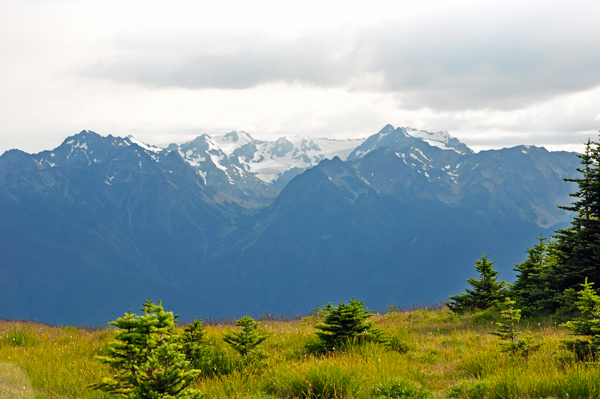
|
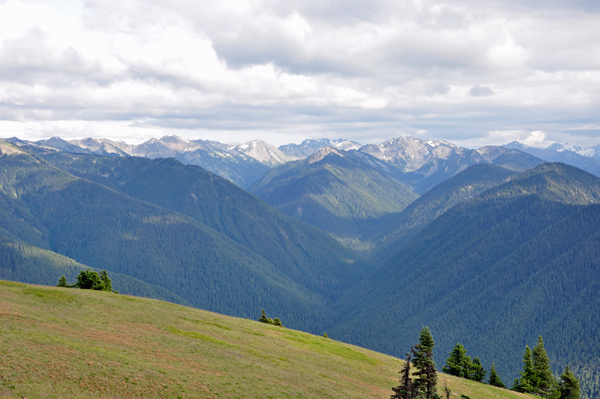
|
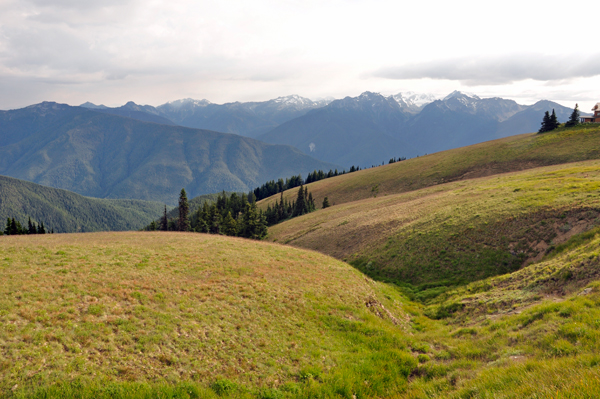
|
Below: One of several deer resting in
the meadow |
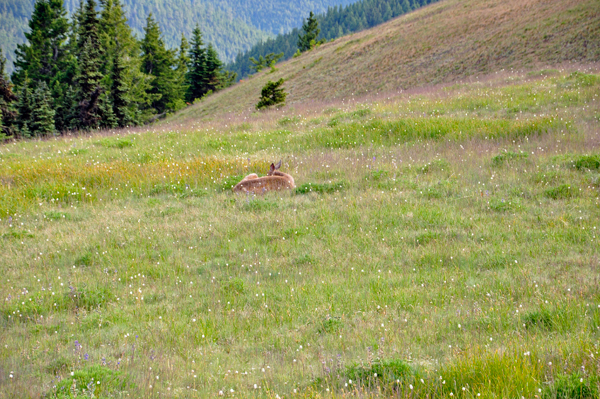
|
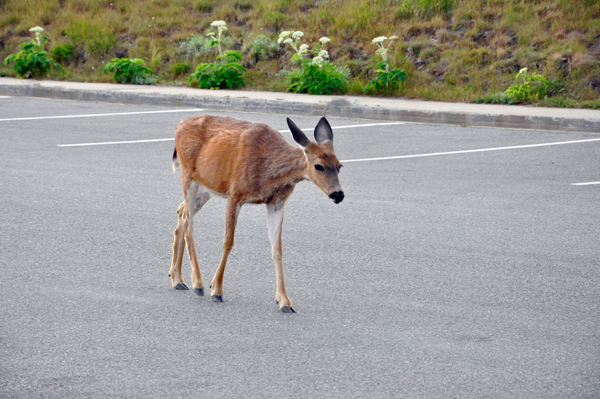
|
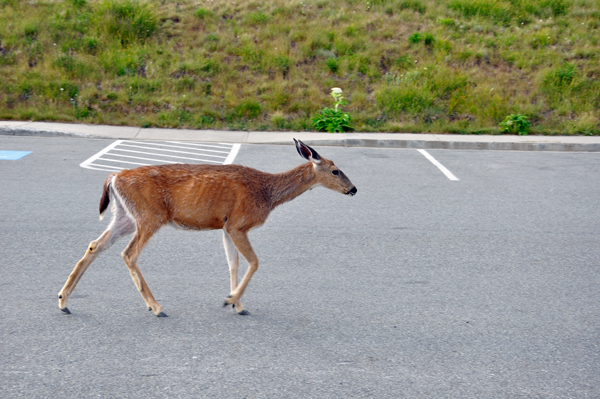
|
Below: Lee Duquette was just
walking along the sidewalk and suddenly stopped when he realized a deer
was eating something in a hole. Within seconds, another deer came down
the hillside and the first deer lunged at the second deer. The second
deer quickly scattered. Lee backed up quite a bit, and the deer continued
to feast at whatever it was that he liked in that hole. |
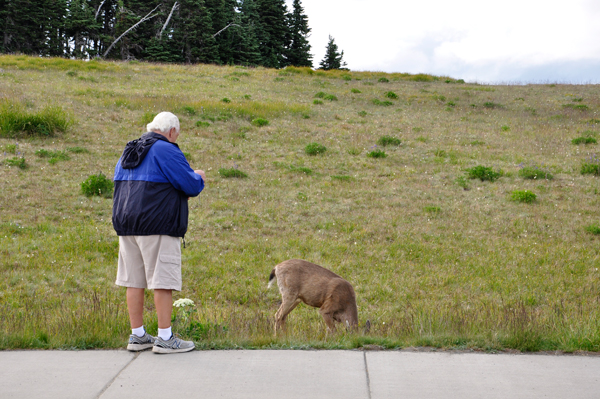
|
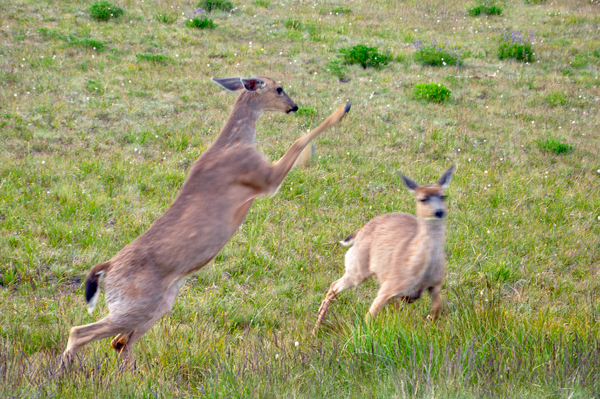
|
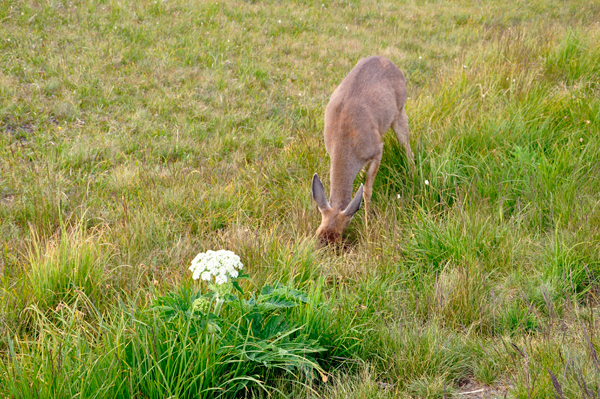
|
The two RV Gypsies walked across the street
to where Karen Duquette's sister Ilse Blahak was standing. Ilse noticed
another deer approach. This time all it took was for the original deer
to look at the other deer and it scampered away, as Ilse took a few
photos. |
 |
 |
Below: Big zoom lenses come in handy. |
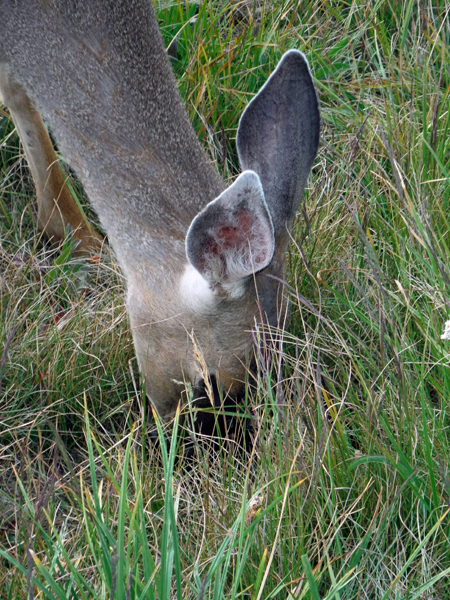 |
Below: A bit down the road,
the two RV Gypsies stopped to take more scenery pictures. Then Karen
Duquette looked down the cliff side because she heard movement. |
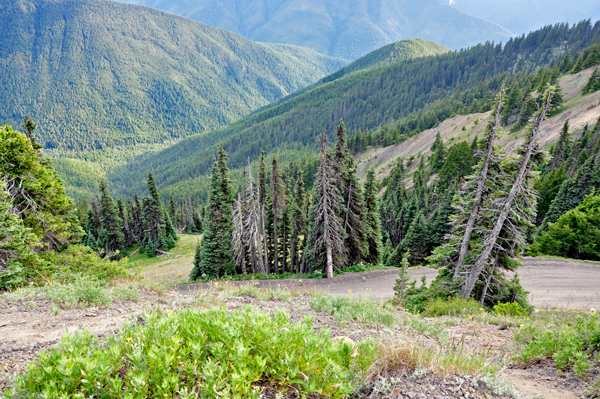 |
Below: Looking down the
cliff side, a marmot was scampering about. |
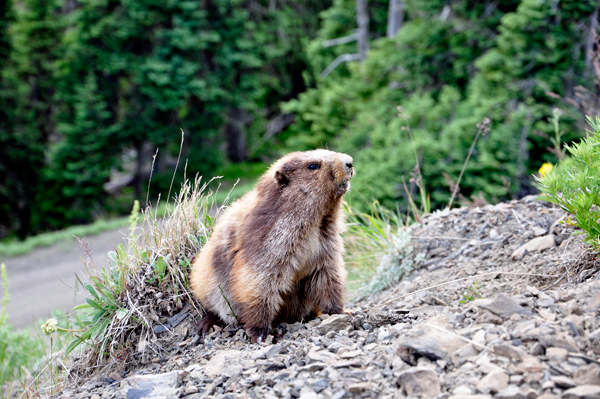
|
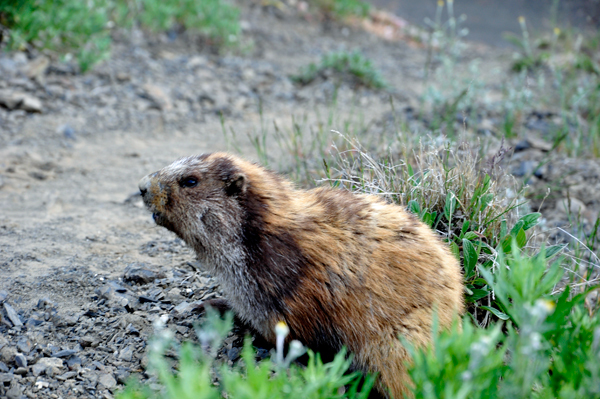
|
Marmots are large squirrels in the genus Marmota, of which there are 15 species. The similarly sized, but more social, prairie dog is not classified in the genus Marmota but in the related genus Cynomys.
Marmots typically live in burrows (often within rock piles, particularly in the case of the yellow-bellied marmot), and hibernate there through the winter. Most marmots are highly social and use loud whistles to communicate with one another, especially when alarmed.
Marmots mainly eat greens and many types of grasses, berries, lichens, mosses, roots, and flowers. |
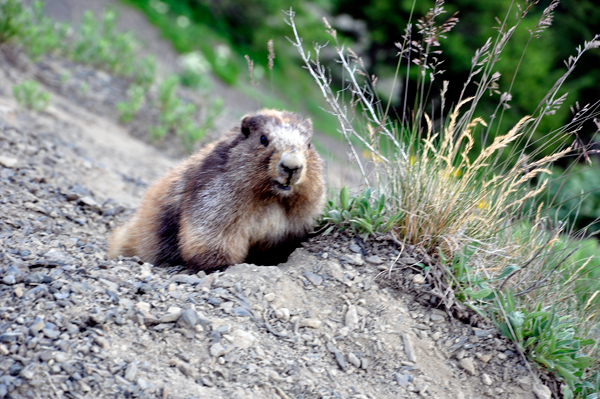
|
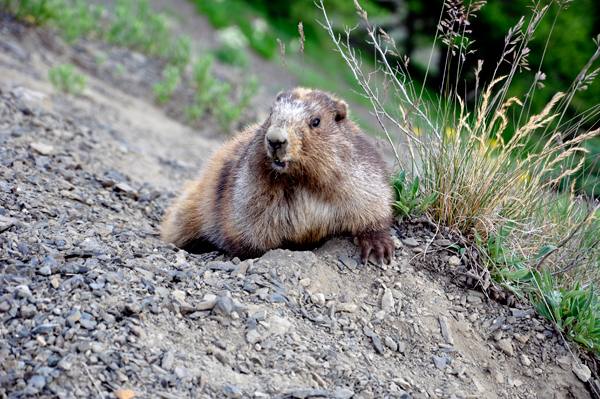
|


































 Olympic National Park is a United States National Park located in the state of Washington, in the Olympic Peninsula. The park has four basic regions: the Pacific coastline, alpine areas, the west side temperate rainforest and the forests of the drier east side.
Olympic National Park is a United States National Park located in the state of Washington, in the Olympic Peninsula. The park has four basic regions: the Pacific coastline, alpine areas, the west side temperate rainforest and the forests of the drier east side.



















 After
reading the sign shown below, Lee Duquette just had to smell the flower.
A male passering by said to him, "If you want to smell dirty
socks, you can smell mine."
After
reading the sign shown below, Lee Duquette just had to smell the flower.
A male passering by said to him, "If you want to smell dirty
socks, you can smell mine."

































